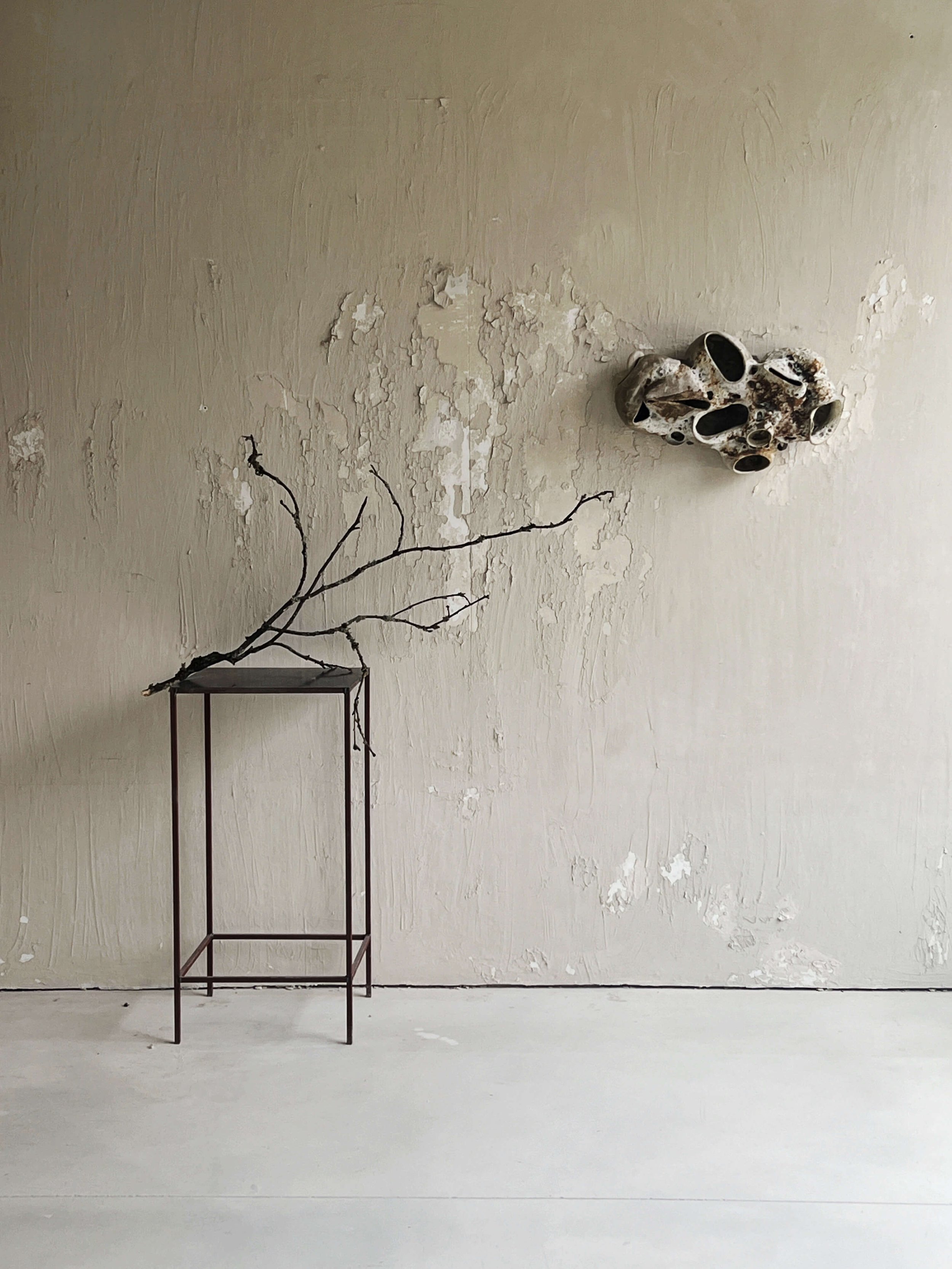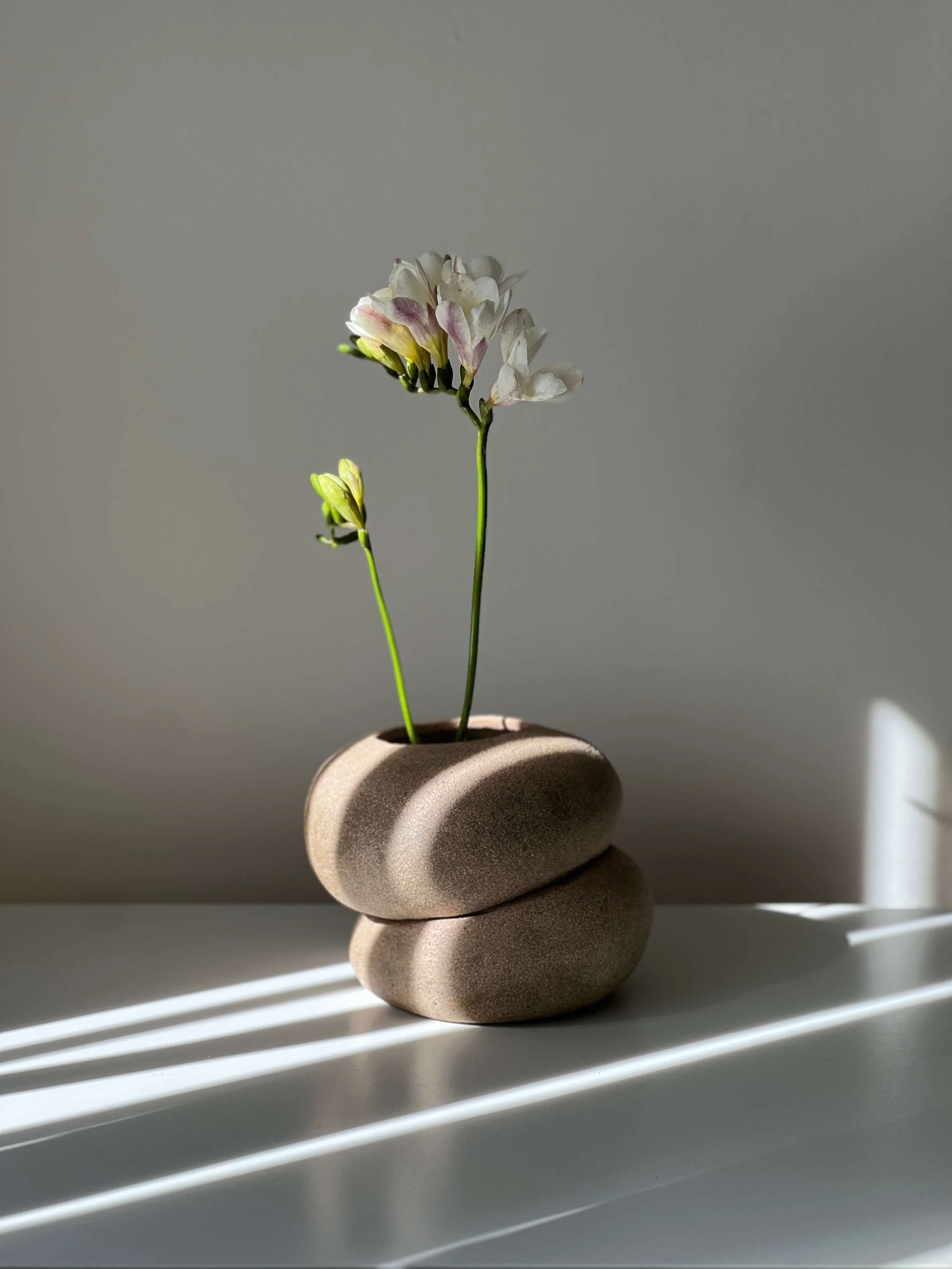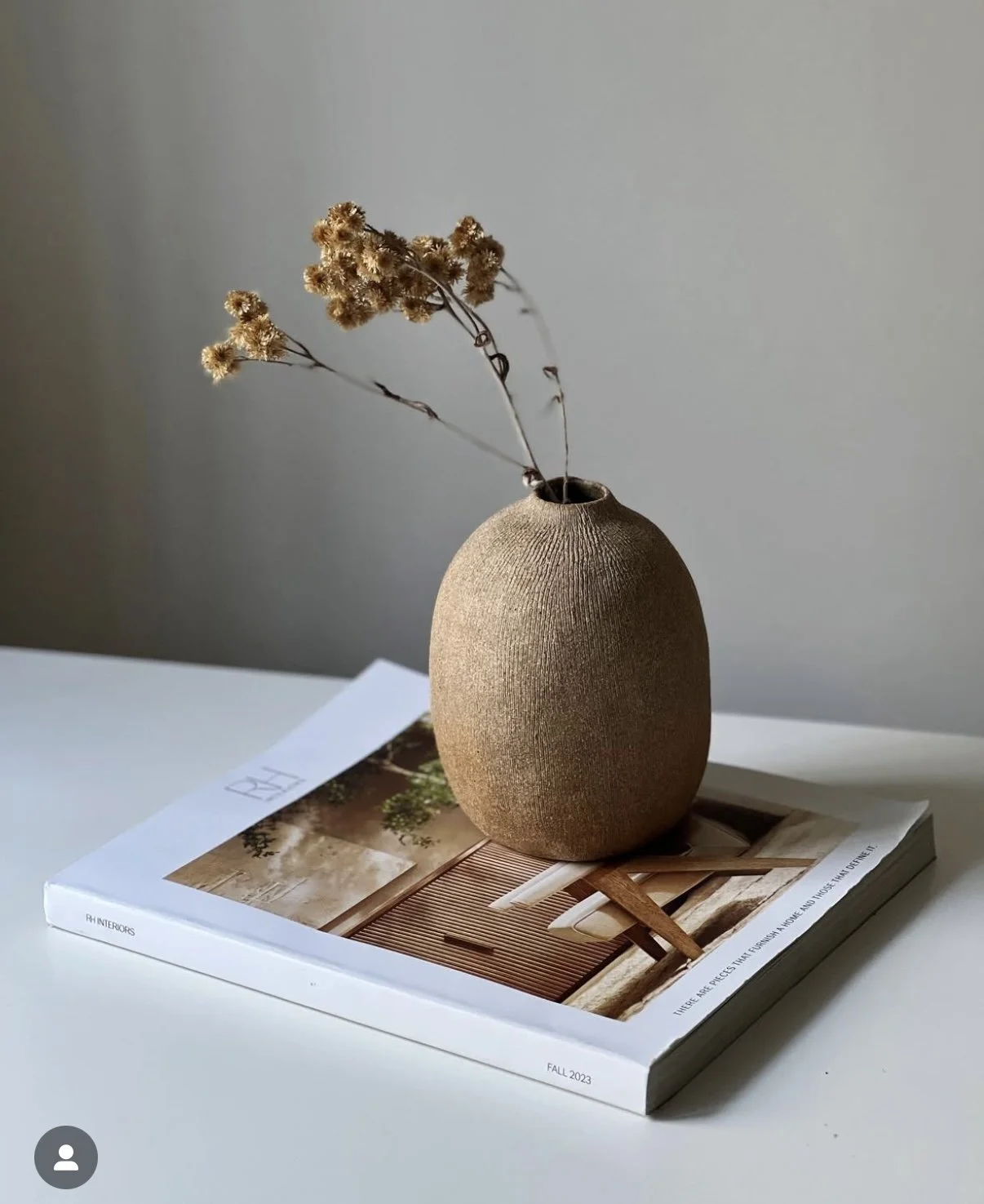An ultimate guide to incorporating ceramic art into your home
Art is a captivating manifestation of human creativity, mirroring life, culture, and emotions. Adding handmade ceramic art pieces into your living spaces offers a wonderful opportunity to explore the intersection of functionality, aesthetics, and personal expression. It also adds three-dimensional decor to your interior. Incorporating a ceramic piece of art that is purely decorative can serve as a focal point, infusing your space with character and artistic flair.
Whether you're a seasoned collector or just beginning to explore the world of ceramics, incorporating unique ceramic pieces into your home decor can elevate your space in countless ways. This ultimate guide will walk you through everything you need to know about integrating ceramic art into your home, ensuring that each piece you choose enhances your living environment.
What is Ceramic Art?
Ceramic art encompasses a wide range of objects handmade by ceramic artists from various types of clay, which are then fired at high temperatures to achieve durability. This art form includes everything from functional items like vases and bowls to purely decorative sculptures, vessels, and wall installations. The beauty of ceramic art lies in its versatility and the myriad ways it can be shaped, glazed, and textured.
Understanding Different Types of Ceramics
Ceramics can be broadly categorized into earthenware, stoneware, and porcelain, each with its own distinct characteristics and suitable uses. Earthenware is typically more porous and fired at lower temperatures, resulting in a rustic and earthy feel. Stoneware, fired at higher temperatures, is more durable and has a denser texture. Porcelain, known for its fine quality and translucence, is often used for more delicate and refined pieces.
Photo from the studio of Janaki Larsen, Vancouver, British Columbia
Exploring Different Styles
Ceramic art comes in a variety of styles, from traditional and classical to modern and abstract. Traditional ceramics often feature intricate patterns and designs inspired by historical and cultural influences. Contemporary ceramics, on the other hand, may emphasize minimalist, geometric or organic shapes with a focus on form and texture. Abstract ceramics push the boundaries of conventional design, creating unique and thought-provoking pieces that can serve as conversation starters.
How to Choose Ceramic Art for Your Home?
Incorporating ceramic art into your home decor is a wonderful way to add elegance, character, and craftsmanship to your space. By carefully selecting and thoughtfully displaying these pieces, you can create an environment that is both aesthetically pleasing and personally meaningful. Whether you're drawn to the elegance of a uniquely textured vase, the charm of an organically shaped vessel, or the bold statement of a contemporary ceramic sculpture, ceramics offer endless possibilities to enhance your interior.
Unique Aesthetics
Ceramic pieces often feature organic shapes, rich textures, and a variety of finishes, making them standout additions to any interior. No two handmade ceramics are exactly alike, providing a sense of uniqueness and character to your space. Often, ceramic artists create single-edition works that can’t be replicated, ensuring you get a one-of-a-kind art piece in your home. This is especially true for artists like myself who work with hand-building techniques rather than making ceramics on the pottery wheel. Even if I try, I cannot make two identical pieces, which makes each one even more special.
Versatility
Ceramics can fit into almost any interior design style, from modern and minimalist to rustic and traditional.
Ceramic decor objects come in a variety of textures and colors, from earthy rustic surfaces to glossy glazes, and range from muted, nature-inspired tones to bright, vibrant colors.
Their adaptability makes them a perfect choice for various rooms and settings. Whether you want to create a serene, understated look or make a bold statement, ceramic art can seamlessly blend into your decor.
Connection to Craftsmanship
Handmade ceramics reflect the skill and creativity of the artist, bringing a touch of human connection and authenticity to your home. Some artists intentionally leave irregularities, indents, and fingerprints as evidence of the human hands that create each piece.
Ceramic Art Buying Guide: How to Choose the Right Pieces
When it comes to aesthetics, design and art in the interior I say build visual awareness. Follow the Instagram and Pinterest accounts of interior designers you like. Make an Instagram folder and a Pinterest board with the images that inspire you and go over it when the time comes for you to style your home and choose art.
Trust Your Gut
The way you live influences the way you feel. Think about what you want to feel in your home. Do you desire a sense of calmness, relaxation, and comfort? Or perhaps you want your home to inspire you with its artistry and sophistication?
A home should represent its owner rather than be driven by trends. Select pieces that you find visually appealing or have a personal connection to. Something that you are truly attracted to will ultimately stand the test of time.
Do Your Research
Make sure to look for unique ceramic art and artisanal ceramics when choosing your pieces. There are many works out there that might look handmade but are actually manufactured. More so, the design could be copied from the original ceramic art by an artist. I will talk more about how to find original ceramic art below.
The photo is from the Graye gallery in West Hollywood, California
Mix and Match
Art doesn’t have to match your room; it can be eclectic. Don’t be afraid to mix different types of ceramics. Combine contemporary ceramic sculptures with elegant vessels and vases to create interesting displays. Mixing different textures and finishes can add depth and interest to your decor.
Delve Deeper
If you've fallen in love with a piece, do your research on its history. This process may lead to more works that suit your taste and space. Once you are attracted to a vase or a sculpture, learn a little more about the artist who made it, their values, background, and process.
Displaying Ceramic Art
When it comes to displaying your ceramic art, the possibilities are endless. Compared to other art forms like paintings, ceramics can be displayed on horizontal surfaces like tables and floors, hung from the ceiling, and mounted on walls. Search for ceramic installations, and you will be surprised by the options that exist.
Ceramic Centerpiece
Use ceramic artwork to create focal points in your rooms. A large ceramic sculpture or an arrangement of vases can draw the eye and anchor the space.
Consider Walls for Ceramic Display
Adding ceramic wall installations is something new and unconventional. More and more ceramic artists are creating pieces for hanging on the walls. The good news is that the installation can be customized specifically for your wall size. Ceramic wall art is a great way to elevate your space to the next level of sophistication.
Use Shelves and Mantels
Shelves and mantels are perfect for displaying ceramic pieces. Arrange items at varying heights and group them in odd numbers for a more visually appealing display. Place all of them on one side of the mantel.
Experiment with Groupings
Grouping ceramics can create a striking impact. Consider creating a themed collection, such as a set of vases in different shapes and sizes but with a cohesive color palette.
Remember the Coffee Tables
Large ceramic vessels can be both artistic and functional. Consider adding one to a coffee table in the living room for an elegant and unconventional art display. Another way to add a unique touch to the coffee table decor is a conversation piece. It can be a small ceramic sculpture, abstract or realistic, depending on your taste.
Supporting Ceramic Artists
Ceramic artists often face underappreciation and are not always considered "real" artists in the same way as artists working with other art mediums. Despite the intricate skill and creativity required to craft ceramic pieces, their work is frequently seen as merely functional rather than artistic. This perception overlooks the fact that ceramics can convey deep artistic expression and cultural significance.
Buy from Local Artists
Purchasing from local ceramic artists supports their craft and provides you with a unique, one-of-a-kind piece. Explore local galleries, craft fairs, search on social media platforms like Instagram and Pinterest, online directories like Erria, and marketplaces like Etsy to find beautiful ceramics.
As I mentioned earlier, it can be confusing to identify if the ceramic work you are interested in is manufactured or handcrafted by an actual artist. The best way to identify if you are buying a handmade piece is by reading the “About” section on their website or a marketplace. In most cases, the artist will have their photo and talk about their background, inspiration, and creative process. This not only ensures you are buying a unique handmade ceramic piece made by human hands but also helps to connect with the values of the artist and understand the story behind their work.
Additionally, check for the artist's mark or signature on the bottom of the ceramic piece, which indicates authenticity and craftsmanship.
Understand the Process
Learn about the techniques and processes behind ceramic art. Understanding the time, effort, and skill involved can deepen your appreciation for each piece.
To learn more about the practice of creating ceramic artwork, read my blog post, “Insight Into the Practice of Creating Ceramic Artwork.”
This blog post, “The Artistry of Hand Building” will introduce you to the process of hand-building in ceramics, a traditional, centuries-old technique of creating ceramics.
Caring for Your Ceramic Art
Clean your ceramics with a soft, damp cloth and never use chemicals, they can damage the glaze or texture. Some pieces can be hand washed under running water but never in the dishwasher. For intricate or textured pieces, use a soft brush to gently remove dust and dirt.
Frequently Asked Questions
How to pick out artwork for your home?
Lean towards ceramic art that resonates with you and complements your living space. It is important to choose pieces that evoke the desired atmosphere, whether it's calmness, relaxation, or inspiration. Trusting your instincts and selecting artwork that you genuinely connect with will lead to timeless joy.
Are handmade ceramics worth it?
Yes, Handmade ceramics offer unique aesthetics, as each piece is one-of-a-kind, showcasing the artist's craftsmanship. They add character to your space and can serve as conversation starters. Moreover, supporting artisans promotes sustainability and the appreciation of traditional crafts.







